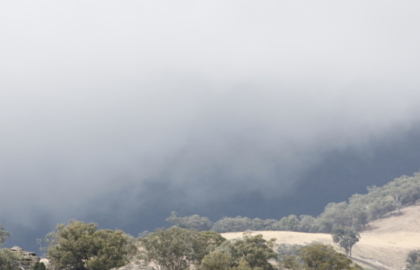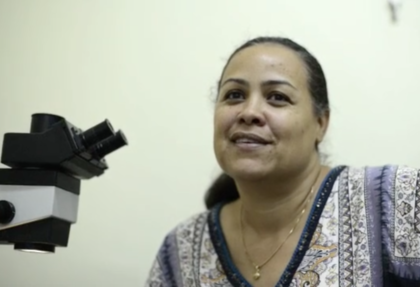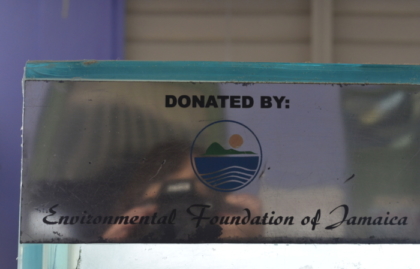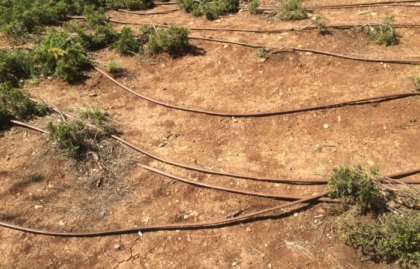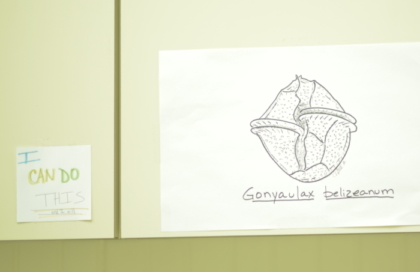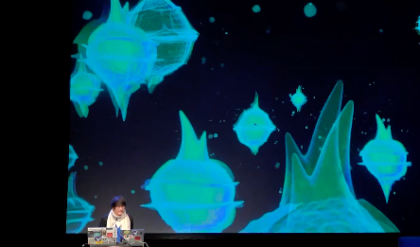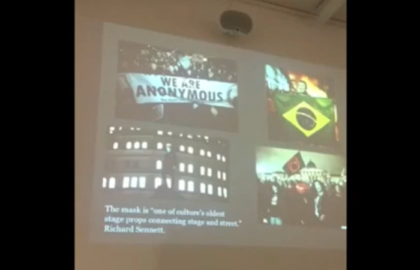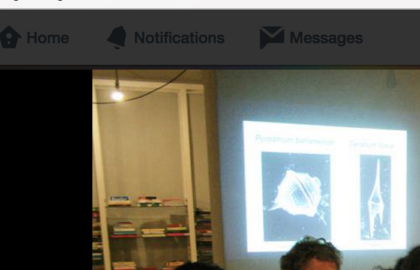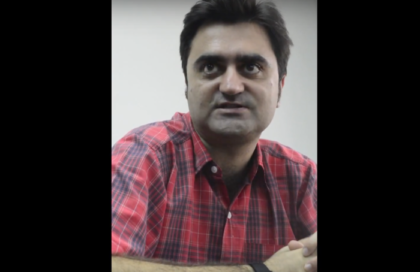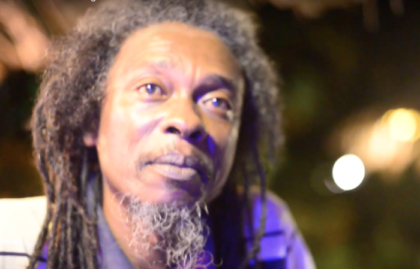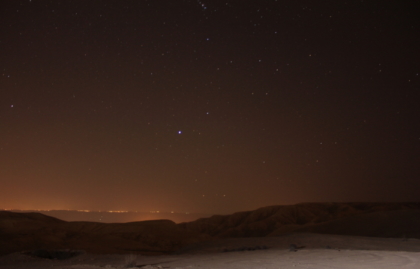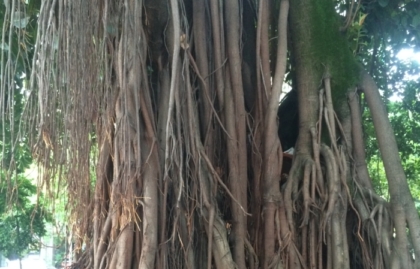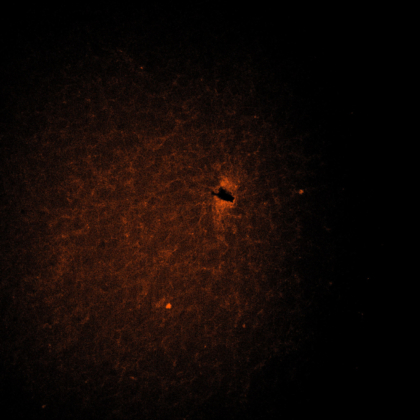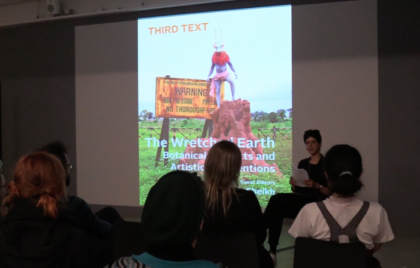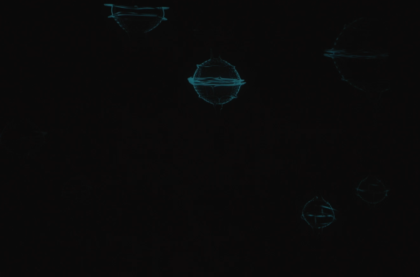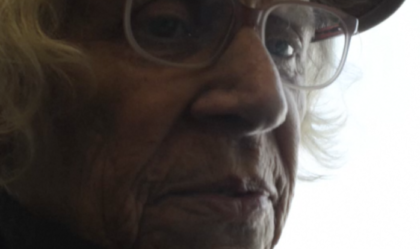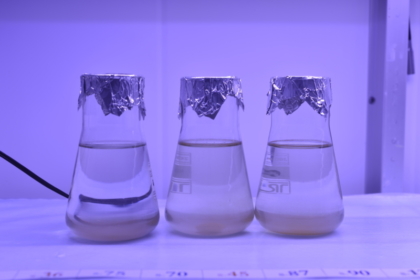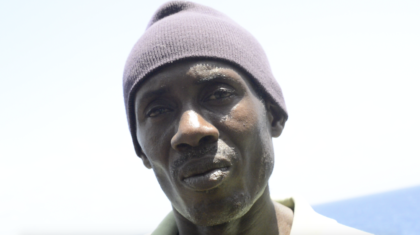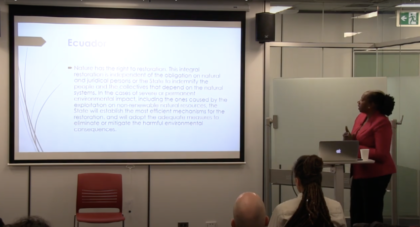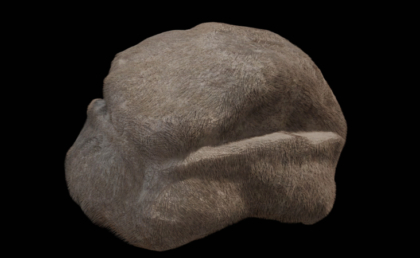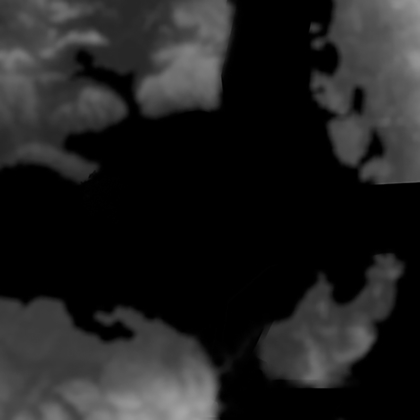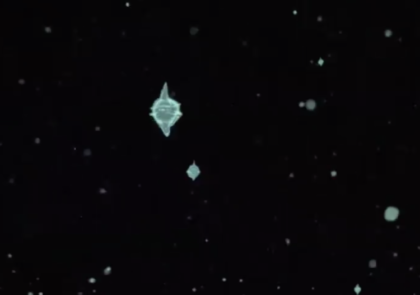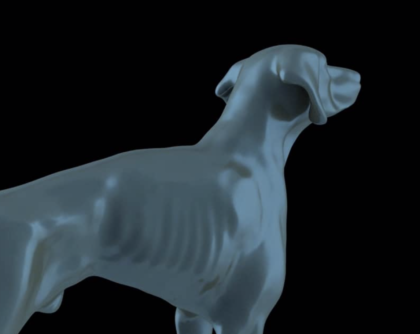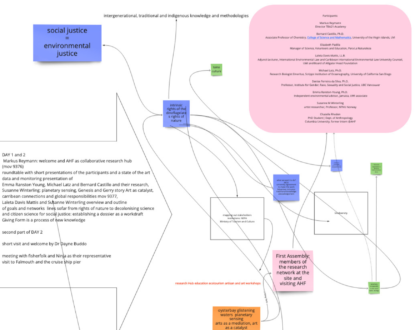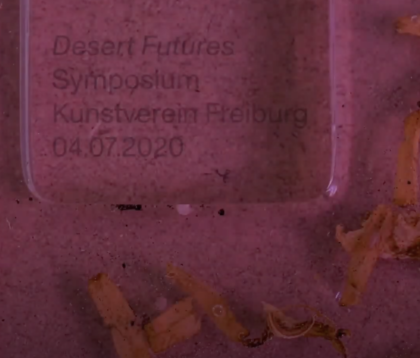more particles
dreams, nonlinear, fog, and breaths
Elizabeth A. Povinelli and Susanne M. Winterling
”… this would be the proof that Mallarme had chosen an ambiguous technique of counting, permitting exactly this uncertain flickering of contrary hypotheses: He would thus indeed have decided something – the uncertain code rather than the certain or absent code – and with this choice would have finitized himself. However this last option – voluntary ambiguity – would be just as fragile as the others. If the count is only just ambiguous, we can not be certain that Mallarme in his heart of hearts, frankly chose ambiguity. We might very well think that he did want to code the poem, but that he let pass a few negligence’s in the final details – both wanting and not wanting to see his undertaking through to the end. That is to say that there is a strong possibility that Mallarme basically knew no more than we do about his poem, and even that did not wish to know more; and this because the poem is in itself, in fact, a machine for hypotheses – a machine that functions without him, indifferently to his innermost conviction… Master of the undecidable gesture… the vortex of contrary alternatives…”1
SMW: In your new book Geontologies of the Otherwise you throw light on the entanglement of life and non-life, and the connectedness to a kind of perspective or epistemology. As part of this endeavor there could be a dualism, but instead it rattles the distinction as such and like a vertex circles around why there is existence or internally focused energy. Making us look at the skin and respiration as well as meteorology and submarine circulation, is very appropriate to contemporary challenges in considering power structures and the anthropocene. From an artist position this seems aiming with sensibility but leaving enough room for the dark and the toxic, for example in your definition of the virus. Stepping further than Foucaults biopolitics I was however first irritated how your book deals with the “social” as one of the ecologies. Somehow any attempt like that must face „Gaia“ not as a controlled but also an uncontrolled force. I am interested in how much of a “being together” with algae and rocks as humans in geontologies can be worked on: as a structure or intended assemblage? Is lining out the possibilities also an opening to the imagination?
EAP: Geontology, or geontopower is not an ontology but rather a disclosure of the relationship that the philosophy of being has to critical theory and to the formation of power that we have mischaracterized as biopower, biopolitics, but also necropower and necropolitics. This formation of power is not organized around life and death, this vulnerability and precarity but around the difference between life and nonlinear: that which has potentiality, faces the travail of finitude, can die because it has been born and all that is inert and deprived of or never experience this event of events – the coming into being.
It is very important to me to emphasize that in certain regions of late liberalism, say in settler colonies like Australia, North and South America, New Zealand this more fundamental organization has always been more vital in the discipline and control of the otherwise. There the politics of difference since the 1970s pivoted on the demand that indigenous groups present a form of difference that excited but could not fundamentally challenge the grounds of the common law and common sense. The assertion that rocks, rivers, fog and sandbanks were sentient was a perfect expression – it was the right kind of “madness” for cultural recognition: absolutely without sense and absolutely irrelevant.
What the 1970s also saw was the emergence of the whole earth as Sputnik and earthrise snapped by Apollo 8 broadcast on Christmas. It’s this image that gave rise to Lovelock’s notion of Gaia and the subsequent slow understanding of the internal: The extimate, relation between life and nonlife – and thus the rise of the figure of the Virus in geontopower as that which acts of the fact that the difference between life and nonlife is a difference that ultimately makes no difference.
That doesn’t mean there are no differences between the various forms of existence in any given assemblage (as you note bioluminescent algae, humans, reefs) but that we must understand them as already internal to us, but otherwise then us. This point is tricky – as I noted lots of folks, artists, theorists, natural scientists, noting this. I saw in a recent news article in The Guardian, I think, that some biotech startup is hoping to commercialize some bacteria to make us all smarter…
Thus it is a situated being in forms of knowing and dividing existences on the basis of things that have potential and things that do not. Or, as we see more recently in the return of the Animist or the new vitalism, on side of this division is extended to encompass all forms of existence. Now we might see this as a gift of the good to all, but I worry that, like all politics of recognition, this extension of one form to all forms is more fundamentally a refusal to give up or give way to what is otherwise to both sides of the division.
But a fundamental reorganization of the philosophy of existence is needed rather than merely an extension. Take for example Agamben’s recuperation of Greek distinction between zoe and bios in order to demonstrate the way that contemporary biopower works.2 But his critical position pivots not merely on the distinction between zoe/bios and geos but a distinction within bios that distinguishes human potentiality. Agamben takes Aristotle’s distinction between those sovereign things saturated with actuality and those sovereign things endowed with an inner dynamic potentiality, and creates another. As opposed to other forms of life, humans have two forms of potentiality. They possess the generic potentiality that Aristotle identified, a form of potentiality that is exhausted when it is actualized. And they possess existing potentiality, namely, the capacity to not do what one actually has the capacity to do or to not be what one already actually is. Generic potentiality provides humans with an inexhaustible fountain of (negative) potentiality and seems to separate absolutely human life from the other forms of life, let alone nonlife, providing a political and ethic space for the coming community.
While Agamben’s return to Aristotle’s is clear so also is his rethinking of Heidegger’s ontology – which was itself a return to Aristotle.3 This circuit moving from Aristotle’s ancient metaphysical ontology, and its key division within the order of things between nonlife and life, to Heidegger’s reworking of being as Dasein to Agamben’s struggle to find a critical political space within biopolitics should not surprise us. If living things, in Aristotle’s work, are ethically evaluated at their death on the basis of how much of their potential they had actualized, Heidegger grounded the same judgment not on the fact of death as such but finitude as an active stance in life – the decision to become authentic. Dasein transforms an existing negative potentiality (“I like all living things will die”) by actively thinking from its point of view (“what will I have been”).4 This negative form of potentiality absolutely differentiates human life from all other forms of life even as life is defined as that which has the potential to be or not to be what it is potentially. Finitude skins Dasein and allows it to find itself and make its difference. Any other animal, or forms of life, that wishes to walk into Heidegger or Agamben’s open must conform to this form of double negation.5 Forget rock and fog. They are not even in the race.6 In the presence of Two Women Sitting Downontology’s claim to provide a general account of beings reveals its biological bias – we are forced to rename ontology as biontology.
And yet why don’t we see nonlife the inert the already actual, thank you very much, as what life is actually rather than the other way around. What the end of all existents are to become inert? Kind of sound alike the death drive…
SMW: Before we maybe go back to the death drive, could you say a bit about the practice of what you call “improvisational realism”? The Karrabing Film Collective that you worked with could be a prototype. Is that a chance for artists, activists and scientists to collaborate, where each part and parameter in that calculation has a different and own answer? Is that how it acknowledges the otherwise? Is this then another way of saying subjectivity while the dichotomy of subjectivity and objectivity is abandoned?
EAP: Improvisational realism is a phrase that I find best describes how Karrabing Films have been conceived and shot. Films emerge from an idea of a Karrabing member, like: let’s make a film about overcrowding, or let’s make a film about young men being accused of stealing beer. Then other members put in parallel plots and the thicker shape of the film comes into focus. But these plots are pulled from actual experiences and then, as Trevor Bianamu, a Karrabing member often puts it, all the little stories are joined up to one story. That is all the individual points of view curse through each other in such a way that a larger critical narrative rises up. The shots also emerge the dialogue and much and much of the setting of each scene of the film is improvised, again based on what people touch, smell, experience, fear, desire. The gap between the realism and the improvisation of the real, neither being reality in any positive sense, allows I think for a sudden otherwise to emerge – a sudden seeing or experiencing the infrastructural arrangements of differential existence.
I don’t know how replicable this is. All the members of the Karrabing Film Collective know each other pretty well. We study each other in our daily lives and have seen each other act in the situations we are filming and so in the very making and playing out of each shot an the entire movie we are also engaged in a collective conversation about how each of us is structured in and reacts to the organization of power in late liberalism.
We are experimenting with a different production schedule – shooting across a longer span of time and in-between various other activities, work, hunting, shopping, cards, whatever. Thus the film time and the non-film time start running, slipping, blending, into each other making the realism and improvisionalism of life itself appear more starkly.
SMW: The way the fog carries meaning as you describe it is open to other species as well, the not only vitalist tendency is that here is a political claim of co-“interpretations” (A biodiversity that claims the right for Gaia and the fruitfly as well as the code and hacked virus.)
EAP: I woke this morning to a thick Tjelbak (fog) at Belyuen, in the top end of the Northern territory. As I drove my troopie to pick people up for a set of meetings in Darwin the condensation inside and outside my windscreen blurred and co-mingled with the fog surrounding it. The huge black crows were screaming but where they sat and swooped wasn’t visible. And a sore pungency caught the inside of my nose as the fires from last night caught a drift of sewage. Co-interpretation, yes, if by interpretation we mean co-figuration in the strong sense and we remember that there isn’t “interpretation” in relation to which all existents interpret.
SMW: In your recent writings about geontopower the use of mathematics and cosmology can be integrated as well as a critical definition of labor and reproduction. When you depart from Hannah Arendt and Foucault here I wonder where the social structure in geontopower is… as its obviously at least for the time being something we need within a new philosophy of existence as well? Labor power and the exploitation of nature are deployed side by side. The polemic seems to have reinforced a generalized drift away from any value: Analyzing geontopower can we reclaim certain structures for the social?
EAP: I mean the concept of geontopower simultaneously to press the human saturated notion of labor power as it has been developed in critical left theory and to critique the vacuum of social analysis in many contemporary approaches to the anthropocene, climate change, and object oriented ontologies. Geontopower is, as I am currently considering it, unimaginable outside the specific social striated structures of late liberalism. But as much as the concept exposes these structures the concept also turns back on “the social” and asks how this concept or the or a social depends on the very distinctions between life and nonlife crumbling all around us.
So yeah, one must move beyond Arendt’s critique of the Social as enunciated in The Human Conditioninsofar as her approach calls for a return to, as a movement into, a mode of being that once again turns against life as necessity in order to turn life into immortality… that which never ceases. But as with Foucault, I think Arendt’s fundamental imaginary rests on the difference between life and death rather than life and nonlife. Death, the cessation of life, is the form of nonlife that terrifies life. Nonlife is that which begins and ends as saturated actuality lacks drama for them – or in Foucualt’s case is not swept up in the drama of biopower.
SMW: Very much like the… (in a way this is so relevant for any artistic practice.)… “materially figurating effects of public secrets. One knows something is up but not what. One can’t specify what quasi materialities and quasi events are transforming the small inlets into a social milieu and diverting the architectures of existence elsewhere.”7 Is this a kind of becoming with reference to the actual, real or factual?
EAP: Great question – what seems important about these space-moments is exactly the excessive presence and absence of all three – an excessiveness that produces what can feel like an ecstatic trance state with others looking on but unable to see the materializing architectures and suffocated ecologists.
SMW: Could you say something about the role the natural sciences and abstraction like maths have in geontopower?
EAP: The contemporary natural sciences are both the bulwark of geontological presuppositions and one of the leading spaces in which these presuppositions are being challenged. I elaborate this double movement in my upcoming book (Geontology, A Requiem to Late Liberalism), but the cliff note summary can be seen in the traditional disciplinary distinction between biochemistry and geochemistry, biology and geology as investigating distinct and contrasting forms of existence. The concepts of Gaia, the whole earth, climate change, and the anthropocene have however exerted immense pressure on this division of existence. From whatever scale you look the membranes between life and nonlife (again not life and death but zoe/bios and geos) are less membranes then Möbius strips. I have used breath as an example elsewhere. The natural sciences are cognizant of this problem – thus the emergence of geobiochemisty and other boundary exploratory disciplines.
Mathematics is interesting in a somewhat different what – or the mobilization of various forms of mathematics in critical theoretical ontologies. Take for example the now well known distinction between the forms of mathematics favored by Deleuze and that favored by Badiou. Daniel W. Smith has written brilliantly on the impact of these two mathematical tastes in their respective basic ontologies. But both deploy the abstractions of mathematic theory to demonstrate the possibility of truth and the event. And it is this continual obsession with existents that can be seen to break with stasis, the inert, nonlife, and determine that interests and reinforces geontopower insofar as this obsession reconfirms that is nothing to know to experience to affirm where life is not or has never been or might not be.
1 undefined
2 See, for instance, Brogan, Heidegger and Aristotle and Hanley, Aristotle and Heidegger on Being and God.
3 Agamben, The Open.
4 Scott M. Campbell has argued, for instance, that Heidegger did not break his early interest in life (Leben) then reconceptualized its relation to Being (Dasein). See Campbell, The Early Heidegger’s Philosophy of Life. Likewise, Krzysztof Ziarek presses the reconceptualization of Heidegger’s notion of life and Dasein in Being and Time. Ziarek, “A Vulnerable World.”
5 According to Ziarek, by the time Heidegger writes, “The Thing,” the stakes of refusing to understand being from the enclosure of the self-contained human is clear. By thinking from “the point of view of things rather than humans” Heidegger “directs attention to a much more deep-seated vulnerability of things and the world than the one brought to our attention by the possibility of nuclear annihilation, or, as we might chime in today, the threat of global climate change or the possibility of a complete depletion of resources.” Ziarek, “A Vulnerable World,” 176
6 Agamben is not the only one to believe that this interest in the facticity of life is a core feature of Dasein. See Campbell, The Early Heidegger’s Philosophy of Life.
7 Geontologies: A Requiem to Late Liberalism published by Duke University Press (forthcoming) 2016
This conversation between Elisabeth A. Povinelli, Professor of Anthropology and Gender Studies at Columbia University, and artist Susanne M. Winterling was held in autumn 2015.
